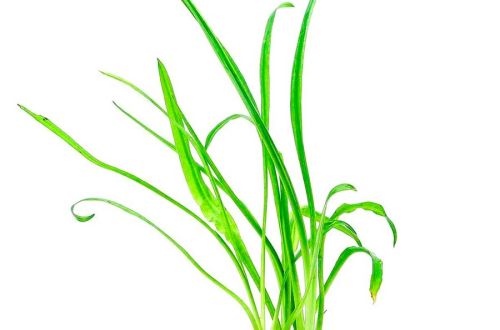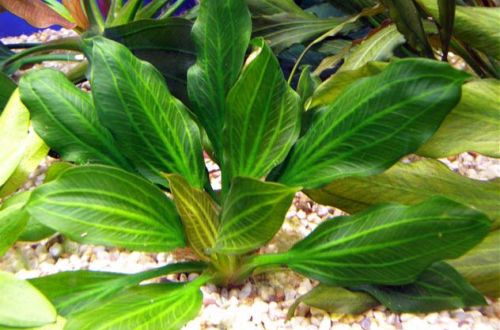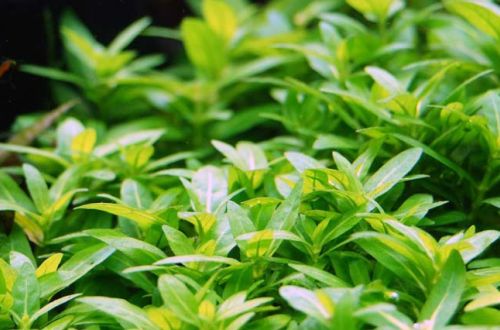
Cryptocoryne reverse spiral
Cryptocoryne retrospiralis, scientific name Cryptocoryne retrospiralis. The plant is originally from India, where it grows along the banks of rivers, forming dense grassy thickets that are flooded during the rainy season. In the dry period, they find themselves on land, during which flowering occurs.

The name itself has been used in the aquarium trade since the 1950s. However, historically it has been applied to completely different types of Cryptocoryne, in particular to varieties of Cryptocoryne Kubota, Cryptocoryne albide and Cryptocoryne spiral. In turn, the true Cryptocoryne retrospiralis is practically not found on sale.
In a submerged position, the plant has long (15–40 cm) ribbon-like narrow (up to 1 cm) leaves with a smooth surface and a slightly wavy edge. With a long stay on land, for example, in the humid environment of paludariums, the so-called “winter leaves” are formed – short and rounded. The word in the name “reverse spiral” refers to the shape of the inflorescence ending in a spiral. Twisted Cryptocoryne (Cryptocoryne crispatula var. Flaccidifolia) blooms in a similar way.
For normal growth, nutrient soil is required. As a rule, top dressing is necessary. Otherwise, it is not picky about the level of illumination and the hydrochemical composition of water.





